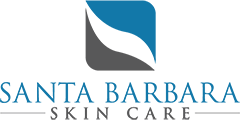Hair infections are conditions caused by the invasion of microorganisms like bacteria, fungi, or viruses into the scalp or hair follicles, leading to various symptoms such as redness, itching, swelling, and hair loss. Some common types of hair infections include:
1. Folliculitis
- Cause: Bacterial infection, often by Staphylococcus aureus.
- Symptoms: Red, inflamed, and pus-filled bumps around hair follicles, itching, and tenderness.
- Treatment: Topical or oral antibiotics, antiseptic cleansers, and good scalp hygiene.
2. Ringworm of the Scalp (Tinea Capitis)
- Cause: Fungal infection, often caused by Trichophyton or Microsporum species.
- Symptoms: Circular patches of hair loss, scaly skin, itching, and redness.
- Treatment: Antifungal medications (oral), medicated shampoos, and maintaining scalp cleanliness.
3. Seborrheic Dermatitis
- Cause: Overgrowth of a yeast called Malassezia on the scalp.
- Symptoms: Red, itchy, and flaky skin, often leading to dandruff.
- Treatment: Antifungal shampoos, corticosteroid creams, and regular scalp care.
4. Impetigo
- Cause: Bacterial infection, typically by Staphylococcus aureus or Streptococcus pyogenes.
- Symptoms: Red sores that rupture, ooze, and form a yellow-brown crust, often starting on the face and scalp.
- Treatment: Topical or oral antibiotics, good hygiene, and avoiding scratching.
5. Scalp Psoriasis
- Cause: Immune system disorder causing skin cells to multiply rapidly.
- Symptoms: Red patches with silver scales, itching, and possible hair loss.
- Treatment: Topical treatments (corticosteroids, salicylic acid), phototherapy, and systemic medications.
6. Head Lice (Pediculosis Capitis)
- Cause: Infestation by parasitic insects called lice.
- Symptoms: Intense itching, visible lice or nits (eggs) on the hair shaft, and small red bumps on the scalp.
- Treatment: Over-the-counter or prescription shampoos, combing out lice and nits, and disinfecting personal items.
7. Furunculosis (Boils)
- Cause: Deep bacterial infection in the hair follicle, usually by Staphylococcus aureus.
- Symptoms: Painful, pus-filled boils, redness, and swelling.
- Treatment: Warm compresses, drainage by a healthcare provider, and antibiotics.

